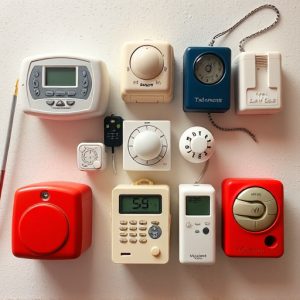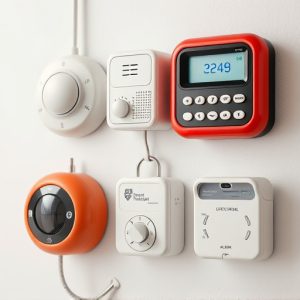Personal Alarm Systems & Sound Radius: Ensuring Lone Workers’ Safety Outdoors
Lone workers in remote outdoor areas need enhanced safety, with personal alarm systems featuring pow…….
Lone workers in remote outdoor areas need enhanced safety, with personal alarm systems featuring powerful sounds within a defined radius key solutions. These devices, designed for outdoor use, can quickly alert emergency services and nearby individuals, reducing isolation risks. Selection considerations include environmental factors like terrain, weather, and foliage, as well as understanding the worker's movement patterns for customized radii. Durable, water-resistant designs with GPS tracking further enhance safety, ensuring swift response in emergencies.
Lone workers, often isolated in remote or high-risk environments, face unique challenges. This article explores critical safety measures through comprehensive discussions on personal alarm systems and their essential role in mitigating risks. We delve into understanding the perils lone workers encounter, focusing on the significance of personal alarm devices with specific attention to sound radius considerations for optimal protection. Additionally, we examine strategies for implementing outdoor solutions enhancing overall safety.
- Understanding the Risks of Lone Workers
- The Role of Personal Alarm Systems
- Factors to Consider When Choosing a Sound Radius
- Implementing Outdoor Solutions for Enhanced Safety
Understanding the Risks of Lone Workers
Lone workers, by definition, operate without immediate supervision or support from colleagues. This can expose them to a range of risks that are often amplified when working outdoors and in remote areas. Understanding these hazards is the first step towards implementing effective safety measures. One significant concern is the limited ability to raise an alarm in case of emergencies, especially if the worker is far from help.
Personal alarm systems designed for outdoor use address this issue by offering a means of communication within a specified sound radius. These alarms often incorporate loud, distinctive sounds that can alert nearby individuals or even emergency services when activated. By ensuring workers have access to such devices, organizations can significantly enhance their safety, especially in remote outdoor settings where the risk of isolation and delayed response is higher.
The Role of Personal Alarm Systems
Personal alarm systems play a pivotal role in enhancing the safety of lone workers operating in remote or isolated environments. These portable devices are designed to emit a distinct and powerful Personal Alarm Sound within a specified Radius, ensuring that help can be summoned quickly if a worker encounters an emergency while outdoors. The ability to trigger these alarms hands-free, often through simple gestures or wearable sensors, adds another layer of protection for individuals who may not always have ready access to communication tools.
The outdoor functionality is particularly crucial as it allows workers to seek assistance even when they are far from base camps or other people. A well-designed personal alarm system should offer a good sound projection to ensure the alarm is heard over varying distances and noise levels, whether the worker is in a dense forest or on an open plain. This technology complements existing safety protocols, providing lone workers with increased peace of mind and emergency responders with critical information for swift action.
Factors to Consider When Choosing a Sound Radius
When selecting a sound radius for personal alarm devices designed for lone workers, several crucial factors come into play. One of the primary considerations is the outdoor environment where these alarms will be utilized. The range should be adequate to ensure that the alarm’s signal can effectively reach help or emergency services, even in remote areas. Factors such as terrain, foliage, and weather conditions can impact sound transmission, so choosing a radius that accounts for these variables is essential.
Additionally, understanding the user’s movement and activity patterns is vital. Whether the lone worker is trekking through dense forests, hiking on open plains, or navigating urban streets, the sound radius should be tailored to their typical range of motion. This consideration ensures that the alarm can be heard consistently and reliably, allowing for timely assistance in case of an emergency.
Implementing Outdoor Solutions for Enhanced Safety
In today’s digital era, lone workers often venture into outdoor environments where traditional indoor safety systems are less effective. Implementing robust outdoor solutions for enhanced safety is crucial. One essential tool is a personal alarm designed with a loud sound radius capable of reaching colleagues or emergency services even in open, remote areas. These alarms not only provide a quick warning signal but also act as a beacon, ensuring help can be summoned promptly if needed.
The choice of personal alarm should consider the outdoor setting, including factors like terrain, weather, and potential obstacles. Water-resistant and durable designs are ideal for various environments. Additionally, integrating GPS tracking enables real-time location sharing, which is vital for navigating labyrinthine or remote outdoors. This technology allows teams to monitor lone workers’ locations and respond swiftly in case of an emergency.
Lone workers face unique challenges, but with the right safety alert systems, such as personal alarm devices and thoughtful consideration of sound radius, their risks can be significantly mitigated. Implementing outdoor solutions further bolsters their safety, ensuring peace of mind whether working in urban settings or remote areas. When choosing a system, factors like durability, ease of use, and reliable communication are key. By adopting these measures, we can foster a safer environment for lone workers, enabling them to perform their duties with enhanced confidence and security.


